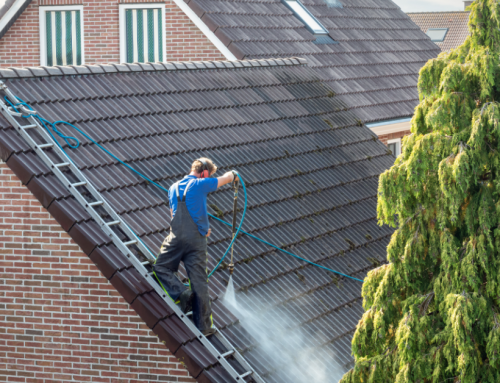While your roof might look simple at first glance, there are dozens of elements that go into making it structurally sound and effective in protecting the structure and inside of your home from the elements. One of those elements is pipe boots, which are the rubber or metal collars that encase vent pipes that stick out from your roof. Let’s discuss problems associated with this essential part of any roof and the repair process.
Common Signs of Damage
When installed properly and in good working condition, pipe boots form a waterproof seal around pipes and prevent leaks from making their way into your home. In cases of extreme weather, such as hurricanes, prolonged periods of direct sunlight, and tornadoes, your roof’s pipe boots may sustain damage that can cause them to shift, peel, or crack. Some common warning signs of damage include:
- Leaks in your roof that, in extreme cases, can penetrate into your home’s ceiling
- Holes, tears, cracks, or other forms of damage on the shingles around your roof’s vent pipes
- Cracked paint or peeling wallpaper on the ceilings of your kitchen or bathrooms
- Water stains on your walls or ceilings
The Repair Process
If you notice any of these issues, it’s likely time to replace your roof’s pipe boots. We always recommend having a professional help you with these sorts of repairs, but if you’re brave enough to go the DIY route, here’s a breakdown of the process:
Step 1: Prep
First, go ahead and pull the shingles up around the pipe boot. Be careful not to tear any of the shingles while completing this step. Just in case, make sure to have a few extra shingles on hand to replace any damaged ones. Once you have the shingles lifted, loosen the nails and remove the shingles around the pipe boot’s base.
Step 2: Remove
Now that you’ve removed the shingles, you can go ahead and remove the old pipe boot. Start by removing the nails or screws that hold it in place and then lift it up carefully. Make sure to be gentle while removing it so that you do not cause any damage to your roof. You should also take a moment to clean up the area with a rag or paper towel.
Step 3: Replace
Once you have your new pipe boot in hand, take a second to confirm it’s the right size before installing it. You can then place it down into the space where your old one previously sat. If you’re having trouble, spinning it around a few times can help you get it into place. Once settled, you should put a few nails around the base of the pipe boot to ensure a strong hold. You can also caulk around the top, right, and left edges. Just make sure not to caulk on the bottom edge since this can cause drainage issues.
Step 4: Reshingle
Once the caulk dries and everything feels sturdy, go ahead and reinstall the surrounding shingles. Take your time and make sure that each shingle is laid down properly before you break out the nails. Regarding the nail placement, make sure not to get too close to the edge of the pipe boot.
Not Ready to DIY?
Many homeowners are wary of completing roof repairs by themselves because without the help of a professional, as they can result in injuries and/or extra costs. It’s best to enlist the help of a skilled team of roofers to help you complete any necessary repairs or improvements. Have our team of experts help get your roof in tip-top shape – Contact us
We don’t charge for simple pipe boot repairs if you’ve confirmed a pipe boot leak and allow us to inspect to see if you’ve had storm damage. Must request service prior April 1 2022. Must sign contingency agreement, allowing us to communicate with your insurance carrier to get your roof covered at only the cost of your deductible. If denied, you’re not charged a dime.




